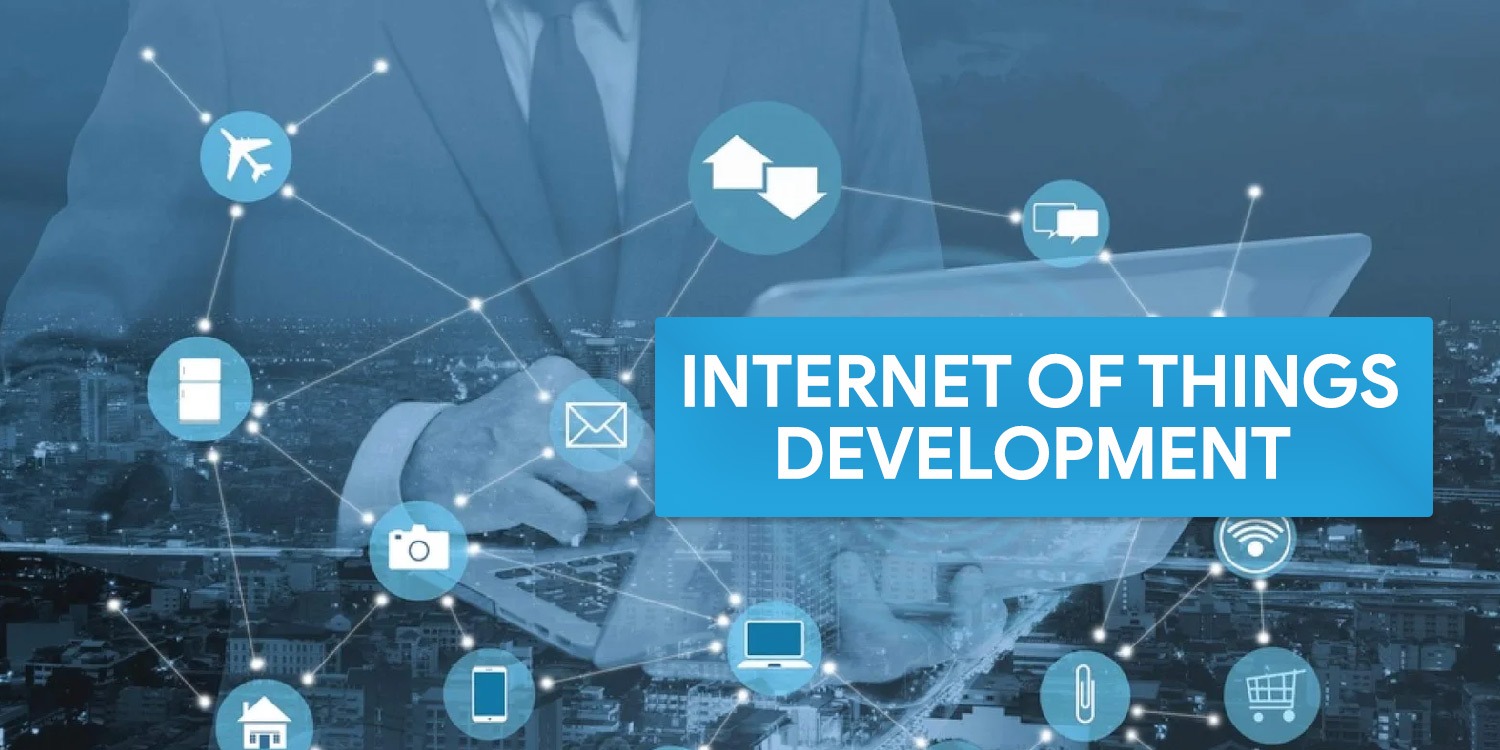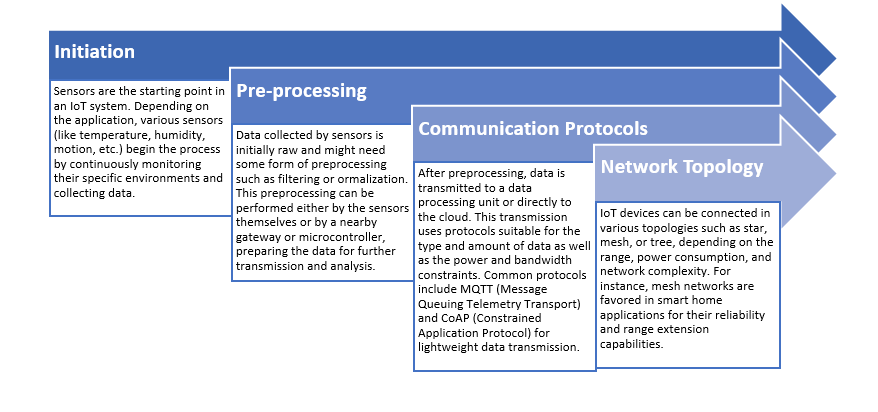
23 May Sustainablity through Internet of Things Development Techniques
Internet of Things Development to Combat Energy Consumption with Sustainable Products
Internet of Things development is quickly changing how we create and make products, opening the door to new ways to solve some of the world’s most important environmental problems. This technology uses a network of linked devices with sensors to analyze data, making goods more useful. The Internet of Things technology has made things that are more environmentally friendly. IoT lets you gather and look at data in real-time, which lets you quickly change how things work, make better use of resources, and reduce waste.
This talk talks about the details of IoT and how it can help make the process of making products more eco-friendly. It does this by giving a technical overview of how connected technologies can help make the future better. By looking closely at IoT-enabled systems, we can learn how to use these technologies to make products last longer, have less of an effect on the environment, and build long-lasting solutions that meet today’s needs.
Fundamentals of IoT in Product Development
1. Detailed Explanation of Internet of Things Development Technology Components:
Sensors:
The main way that an IoT system collects data is through sensors. They can measure many things about the surroundings. Like thermistors check the temperature, photodiodes check the amount of light, and accelerometers check the motion and direction. The type of sensor to use depends on the needs of the product and the level of accuracy we need. To fit into small IoT devices, sensors often need to be very reliable and very small.
Actuators:
These are machines that change the world based on data that has been handled. Actuators can be motors that move or spin or valves that control the flow of fluid. Switches that open and close electrical circuits are included in some of the most common types. Which actuators to use depends on how much force, speed, and accuracy is required for the job.
Connectivity:
The ways and technologies that the actual parts of an Internet of Things development technology system are linked to the Internet and to each other. Wi-Fi, which is commonly used in consumer IoT products. It has a high bandwidth and range. Bluetooth Low Energy (BLE) is usually a main in wearable tech because it uses less energy. For wide area network uses that need a long range and low power use, more specialized ways to join, like LoRaWAN, are used.
Processing Data:
Sensors often receive a lot of data that needs to be processed before it can be used. This work can happen on the devices themselves (edge computing) or in the cloud, where it is centralized. When you process data directly on an IoT device or a nearby computer, edge computing cuts down on latency and the need for bandwidth. Cloud computing, on the other hand, lets you analyze and track historical data in more depth, which is very important for deep learning apps.
Interface for the User (UI):
This is where the user and the IoT device talk to each other. It needs to be easy for people to understand and use so that the Internet of Things development technology system can be monitored and controlled. UIs can be very different, from simple LED screens and buttons to complex graphics user interfaces on phones or the web. When making the UI, you should think about how skilled the user is and how complicated the app is.
2. Integration of IoT Components:
To provide a detailed explanation of how IoT components integrate to form a complete system, let’s break down the processes and technologies involved, focusing on the key aspects of integration across devices, data flow, and user interactions:


Further Explanation of Integration
In an IoT system, the process starts with devices that track factors like motion, temperature, and humidity. These sensors are always collecting data about the surroundings. Before we analyze it further, it has to to be preprocessed, like filtering or normalization. This information is then sent using the right communication methods for the type of data and the needs of the network. For example, MQTT or CoAP can be used to send this information across star, mesh, or tree networks.
Once transmitted, the data undergoes processing which could be at the edge. Edge can be on local devices for immediate decisions or in the cloud for more in-depth analysis. Advanced algorithms process this data to provide actionable insights, which help decide the actions that actuators should take, such as adjusting temperatures or turning devices on and off. The actuators carry out these instructions, and the results of their work are fed back into the system. This creates a loop where sensors are always adjusting to new information, which makes the system quick and efficient.
Users interact with the system through user interfaces on computers, smartphones, and other devices. This lets them handle and monitor their Internet of Things development technology devices from afar. This integration not only makes things easier, but it also gives users more power over their systems. Also, safety features like encryption and scalable designs keep the system safe and allow it to grow without needing major changes. This creates a complex ecosystem that effectively handles the flow of data and interactions between users.
Sustainability Challenges in Product Development
When making new products, incorporating sustainability can be hard in a number of ways. These problems affect many parts, from the initial planning to the management of the end of life. Understanding these problems is important for coming up with good solutions that protect the environment while making products more useful and lowering costs.
Energy Consumption in Product Development
Energy consumption is a big issue in product development because it has a direct effect on both prices and the environment. There are many ways this problem shows up, from the way the object is made to how much energy it uses.
1. High Energy Manufacturing Processes
A lot of energy is consumed in heavy industry like chemicals, steel, and cement. Many times, these processes need to be kept going at high temperatures for a long time. This takes a lot of energy and fossil fuels.
Many old ways of doing things in industry are meant to make things go faster and cost less, not to use less energy. This means that a lot of energy is wasted because of things like old machines, heat loss, and machine cycles that aren’t working at their best.
2. Relying on non-renewable energy sources
A lot of the energy used in production comes from natural gas and coal. And they can’t be used again. CO2 and other greenhouse gases are released in the environment when industries burn these fuels. These gases contribute to climate change and global warming.
Dependence on energy sources that don’t grow back is not a good idea in the long run. As supplies run out and rules about the environment get stricter, businesses need to switch to green energy sources to stay in business and follow the rules.
3. Design and Lifecycle Energy Efficiency
How a thing is made has a big impact on how much energy it uses over its whole span. Things that aren’t designed to use less energy use more power when they’re being used. Over time, this adds up and makes prices go up and hurts the earth.
Electronic products require a lot of energy to manufacture, use, and dispose of. It is possible to remove the overall energy footprint by power-saving modes and recyclable parts. It is possible by designing for energy efficiency as well.
4. New ideas and answers
automated and AI-driven systems are making industry processes more efficient, use less energy, and make less waste. IoT and smart monitors can precisely manage how much power is used at any given moment. Renewable energy sources, such as solar, wind, and hydroelectric power, are used more in production. This reduces the need for fossil fuels and keeps energy costs fixed as these sources get cheaper.
5. Pressures from the market and regulators
There is more and more pressure on manufacturers to follow international environmental standards. These standards often tell them to use less energy and pollute less.
More and more people want sustainable goods, and they care about how energy-efficient both the products themselves and the way they are made. Being able to meet these needs can give you an edge in the market.
Product designers can work on an important part of sustainability that affects cost management, following rules, and being environmentally responsible by working on reducing energy use. This focused method not only helps solve one of the biggest problems with sustainability, but it also encourages a more environmentally friendly way of doing business.
Conclusion:
In conclusion, tackling the problem of energy use in product creation is not just a matter of following the rules or being efficient. It is a deliberate imperative that affects all parts of a product’s lifecycle. By putting energy saving first, businesses can not only leave less of an impact on the environment and get ahead in a market that values sustainability. Adding new technologies like Internet of Things development technology, AI, and renewable energy sources to the production process is a step towards more environmentally friendly methods. These efforts help reach a bigger goal of lowering the world’s energy needs and relying less on nonrenewable resources. This will help the environment and the industries that count on it last for a long time.
Focusing on making products that use less energy will be very important for creating sustainable business practices as industries change. This method not only lowers costs and lowers risks for businesses, but it also puts them in the lead in the movement for a more sustainable future. In the end, the push for less energy use in product development leads to a healthier world and better management of our natural resources. This shows how important innovation and strategic planning are for meeting economic and environmental goals.